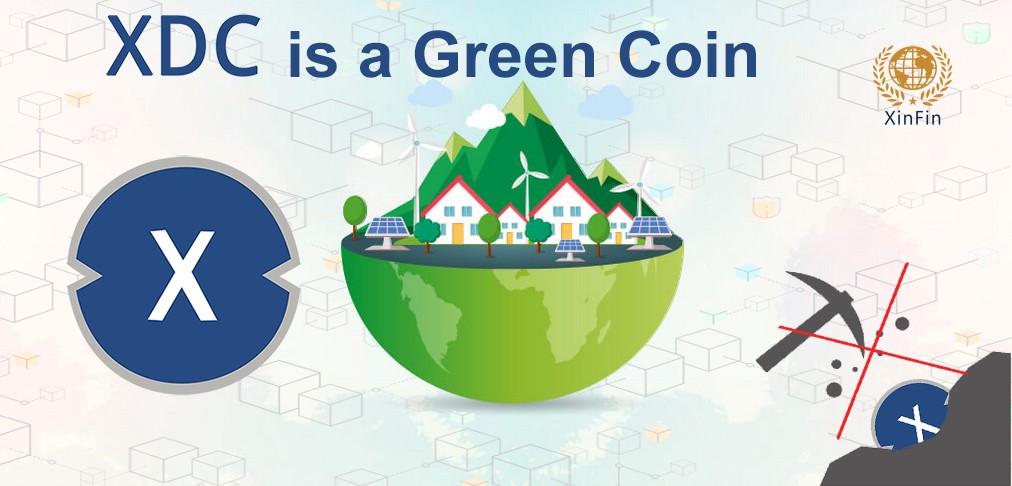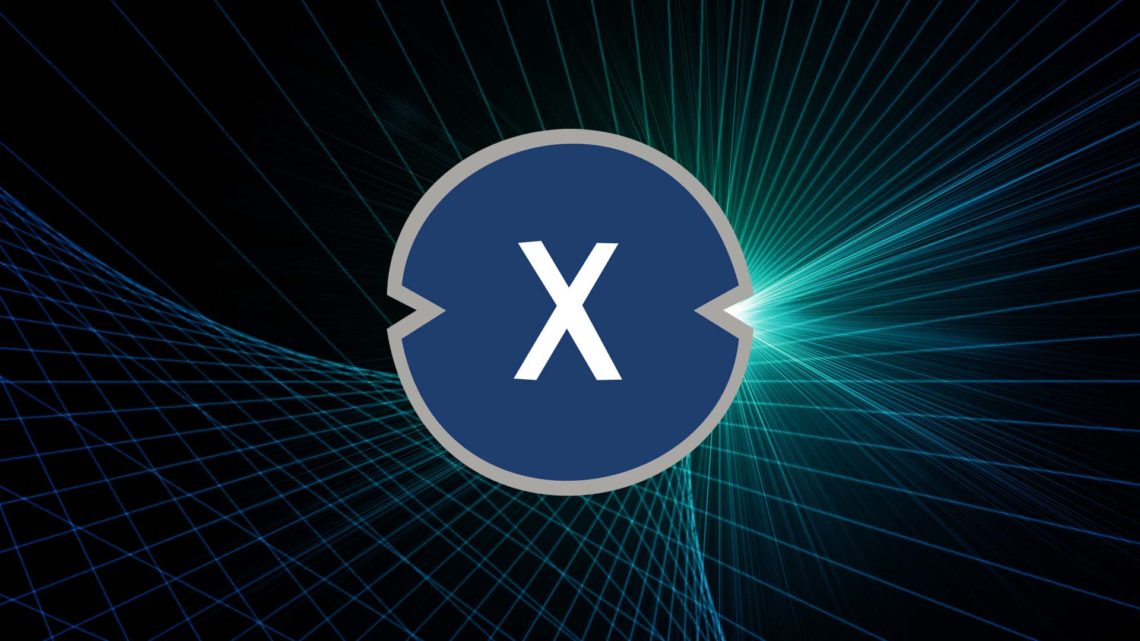Exploring the XinFin Network Blockchain and the XDC Token
XinFin Network is an enterprise-class hybrid blockchain solution. The XDC protocol, based on the native XDC token, uses the Public XDPoS consensus mechanism to validate transactions.
Combining the best elements of both public and private blockchains, as well as the functionality of smart contracts, the project optimizes business practices and promotes the adoption of blockchain technology. Moreover, XinFin is at the forefront of a new economic paradigm where businesses, governments and institutions are using blockchain-based tools and services.
In this article, we will delve into the XDC protocol and the XinFin network. We will also discuss the XDC token, the XDPoS public consensus model, and the various features that this ecosystem has to offer.

What is the XinFin network?
XinFin literally means “infinite exchange” and is a next-generation hybrid blockchain company connecting communities and businesses around the world. The XinFin Digital Contracts native coin, also known as the XCD token, supports the XinFin network.
The XinFin Network combines the power and transparency of public blockchains with the speed and security of private blockchains and an enabled, energy-efficient delegated share confirmation consensus mechanism (XDPoS).
In addition, the XinFin Network provides interconnectivity using hybrid relay bridging and ISO20022 messaging standards. This makes XinFin Network a versatile and developer-friendly platform.
Prerequisites
The XinFin Network team is a non-profit organization called the XINFIN Foundation. The XINFIN Foundation aims to lay the global foundation for blockchain infrastructure to eliminate friction in international payment systems and create enterprise-wide solutions based on community-driven digital assets.
The XINFIN Foundation works with international governments and enterprises to help build new scalable blockchain-based infrastructures. In addition, XinFin allows investors to bid on various infrastructure projects, connecting developers with investors to better fund blockchain projects.
XDC Protocol
The XDC protocol serves as a messaging and confirmation layer for payments. In addition, the XDC protocol supports smart contracts and integration with the Internet of Things (IoT). As a highly scalable hybrid enterprise-level blockchain, the XDC protocol boasts a throughput of 2,000 transactions per second (TPS) and near-instant transaction completion.
The XinFin Digital Contract (XDC Chain) uses the consensus delegated share confirmation mechanism (XDPoS) for global trade and finance. The XDC protocol enables tokenization and digitization of assets while reducing the need for complex foreign exchange infrastructures. In turn, this creates a flexible environment for the management of financial institutions.
What is hybrid blockchain?
Hybrid blockchain combines the best elements of both public and private blockchains to create customized solutions. Hybrid blockchain solutions are becoming increasingly popular among businesses, governments, and international organizations across the sector because of the security and transparency they can offer.
Hybrid blockchains are not open to everyone. This is a key feature of private blockchains. However, many hybrid blockchains also use elements of public blockchains to increase their transparency and security.
In addition, hybrid blockchain operators can select participants and decide which types of transactions can be public and which can be private. These blockchain solutions are often easily customizable and immune to 51% attacks outside the authorized network.
Companies benefit from hybrid blockchains in several ways. For example, using a hybrid blockchain in a closed system can greatly improve data security. This greatly reduces the likelihood of sensitive data leaks.
Another advantage of hybrid blockchains is that they can minimize transaction costs. Generally speaking, small networks with fewer nodes can facilitate micropayments because they require fewer resources than larger public blockchains. This means that small, high-frequency transactions can have fees of less than $0.01 per transaction.

XinFin’s XDPoS public consensus (XDC)
The XinFin Hybrid Blockchain (XDC) uses “public consensus XDPos,” a delegated consensus Proof-of-Stake mechanism. The XDPoS public consensus model is based on voting to select a pool of validators or delegators.
Validators (or delegators) validate transactions and protect the hybrid blockchain network, ensuring that the network only produces legitimate blocks of transactions before they are broadcast across the network. In addition, validators take care of any unforeseen problems that arise on the XDC network.
In addition, the XDPoS public consensus model solves four major problems associated with public blockchains. First, Public XDPoS consensus is highly energy efficient and uses about 1/10 of the energy required by Bitcoin and other Proof-of-Work (PoW) consensus models.
Second, Public XDPoS Consensus provides ultra-low transaction fees, making it ideal for any micropayments. Third, Public XDPoS Consensus increases scalability with high throughput. And the “Self-KYC” feature, in turn, allows enterprise customers to maintain compliance by managing permissions and identities without any hassle.
In addition, XinFin Public XDPoS Consensus is an environmentally friendly and democratic model that lowers the entry barrier for participants, eliminating the need for expensive mining equipment or excessive energy consumption.
XDC Token
The XDC token is used as a payment and settlement layer by financial institutions and decentralized applications (dApps) built on XinFin. The XDC token provides access to financial services that help small and medium-sized businesses integrate the XDC protocol.
Several applications and services use the XDC token. These include peer-to-peer trading platform TradeFinex, digital asset management service MyContract, as well as a number of educational institutions, financial services, banks and technology companies. In addition, the XDC token is used to manage land registry records, online billing and more.
According to CoinGecko, as of this writing, the XDC token is trading at about $0.14, with a market capitalization of $1.8 billion. The XDC token replaced the ERC-20-compatible XDCe token, which is currently no longer in use.
XinFin MasterNotes
The XinFin Network Public XDPoS consensus model uses nodes and validators instead of miners. While Proof-of-work (PoW) miners require a lot of processing power and resources, the XinFin Public XDPoS Consensus model is an environmentally friendly and sustainable mechanism.
XinFin uses validation nodes and masternodes to protect its networks. Validators accept or reject transactions before they are added to the blockchain by masternodes. In addition, each validator must create a unique node list (UNL) to store information about the nodes with which it regularly interacts.
Masternodes are necessary for the stability and self-sufficiency of the XDC protocol. Each masternode must be publicly identifiable and go through KYC and other compliance processes. The main functions of masternodes are to add transaction blocks to the blockchain and facilitate decentralized management.
To set up an XinFin masternode, participants must supply 10 million XDC tokens and ensure that the network is 100% operational. In addition, there are several restrictions in order for the masterkinds to act fairly and in the best interest of the network.
Any entity or individual who does not follow the rules or has an unscrupulous past cannot qualify for masterkind status. In addition, XinFin MasterNodes can earn passive income by receiving staking fees.
XinPay: XinFin Wallet
XinPay is XinFin’s latest wallet for storing, sending and receiving XDC tokens. With XinPay, users can also interact with decentralized applications (dApps) directly from a web browser.
XinPay comes with a mnemonic phrase for secure fund backup. XinPay XinFin Wallet is available for download for Chrome, Brave, Firefox and Opera.
XinFin Remix
XinFin Remix, officially known as “Browser Solidity,” is a web browser integrated development environment (IDE) that allows users to write, deploy and execute smart contracts using the Solidity programming language.
Developers can run XinFin Remix along with the XinFin node client from the same local computer and exchange data using the XinFin application programming interface (API). They can also execute smart contracts in XinFin Remix.
XDC Ecosystem Co-Builder Plan
The XDC Ecosystem Co-Builder Plan helps fund new projects based on the XDC network. It also supports and promotes the creation and promotion of decentralized applications (dApps) based on XDC. Any promising project can apply for funding, marketing and technical support.
XinFin Bonus Program
The XinFin Bounty program allows the XDC protocol community to be rewarded for improving the ecosystem. Through a series of bug-finding events and online hackathons, the XinFin community aims to optimize and protect the XDC protocol and the various businesses and applications that use XinFin technology.

Results
The XinFin network and the XDC protocol are paving the way for enterprise blockchain adoption. By introducing hybrid blockchain services, the XDC network can fundamentally change the way businesses do business.
In addition, with the XDC protocol and the Public XDPoS consensus mechanism, XinFin combines the best elements of public and private blockchain with the functions of smart contracts. XinFin makes it easy for enterprises and developers to use a range of blockchain-based tools and services.
With a focus on regulatory compliance and user security, XinFin offers ready-to-use hybrid blockchain solutions that can revolutionize global commerce and finance.
